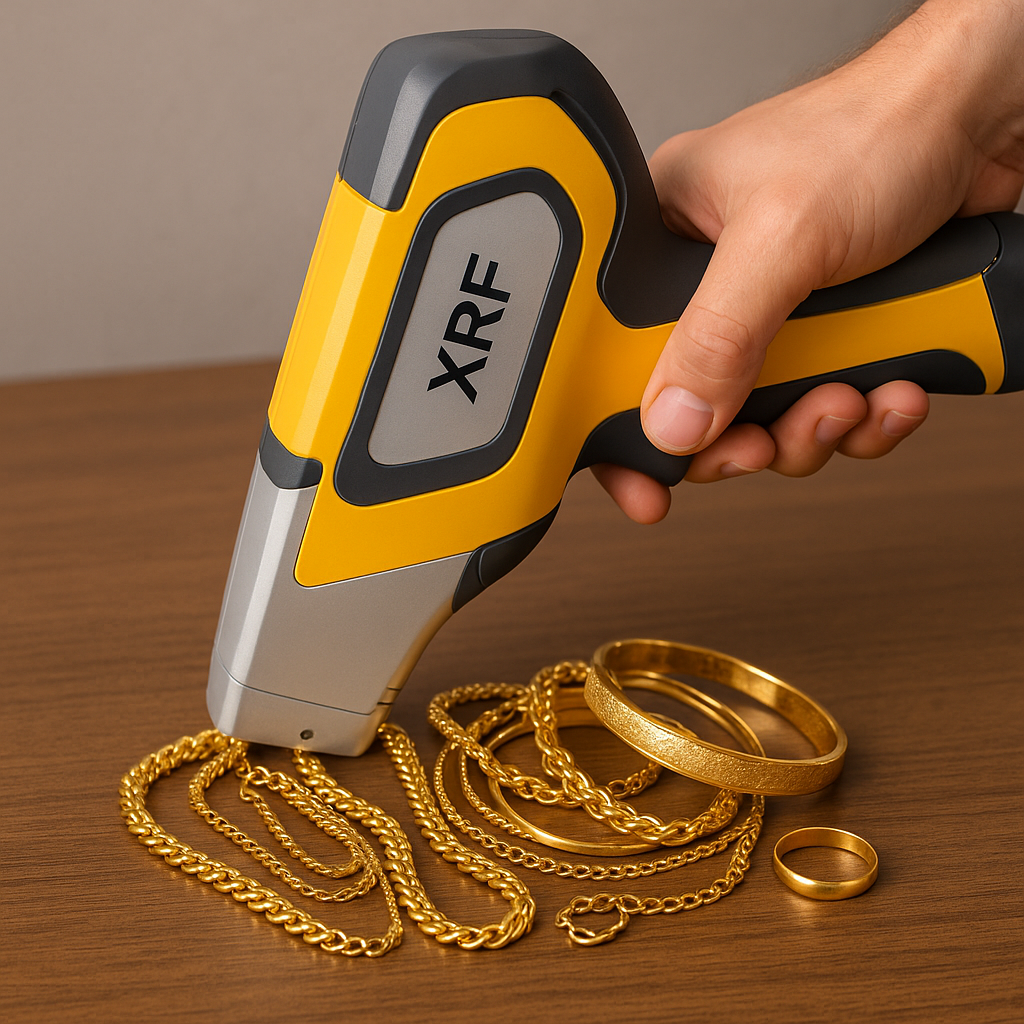
How to Test Gold Jewelry at Home (and Professionally)
If you’ve ever wondered whether your gold jewelry is real—or wanted to confirm its purity—there are several ways to find out. Some methods are quick and simple to do at home, while others require professional equipment for precise results. In this guide, we’ll cover how to test gold jewelry using three methods—scratch-acid testing, electronic sigma testers, and XRF machines—ranked from the most basic to the most advanced.
Quick Ways to Spot Fake Gold Before Testing
Before breaking out any testing kits or machines, you can often tell a lot just by looking closely at your gold jewelry. Here are a few quick checks anyone can do at home:
- Check for a hallmark or purity stamp: Look for markings such as 10K, 14K, 18K, 22K, or 24K (or percentage marks such as 417, 585, 750, 916, 999). However just seeing a stamp isn't enough by itself; obviously many fakes can also have stamps.
- Inspect for discoloration: Real gold doesn’t rust or tarnish. Fading color or greenish spots on the surface often mean it’s gold-plated, not solid. However, it's also not uncommon for lower purity gold jewelry to experience discoloring overtime due to the alloy it's made with. In any case, if you notice rust or discoloring, it's a good idea to the pieces tested.
- Look for scratching: Oddly enough, light scratching and denting can be a good sign. Real gold is soft and will show small wear marks over time, while fake metals are harder and often remain unnaturally perfect.
- Ignore the magnet test: Gold isn’t magnetic—but neither are many other metals, so it's relatively easy to make a non-magnetic fake. On the flip side, some lower karat gold might be magnetic due to the other metals used to make the piece. The magnet test alone isn't very reliable.
Once you’ve done these quick visual checks, it’s time to move on to proper testing methods.


1. Scratch-Acid Test (Cheap DIY Gold Test)
The scratch-acid test is the most affordable and widely available way to check gold authenticity. It involves rubbing your jewelry on a testing stone and applying acid solutions that react differently depending on the karat level.
- Price: $10–$30 for a kit online or in stores
- Accuracy: Rough estimate, can be off by a few karats
- Best For: Scrap gold, broken jewelry, or quick home testing
- Drawbacks: Slightly damages the piece, not very reliable, results can be misread
This method is fine for confirming whether something is “real” gold before selling as scrap, but not suitable for valuable jewelry or when you need a precise purity test.


2. Sigma Testers (Best for Gold Investors & Enthusiasts)
The next level is using an electronic gold tester, commonly known as a Sigma Metal Verifier. These devices scan your jewelry with electromagnetic waves and compare the reading to gold’s natural signature.
- Price: $600–$2,000 depending on the brand
- Accuracy: Reliable for coins, bars, and most jewelry
- Best For: Collectors, gold investors, and people with several thousand dollars’ worth of gold
- Drawbacks: Accuracy varies by brand; not ideal for very small or irregularly shaped pieces
For anyone who buys gold from reputable dealers but wants to double-check authenticity at home, sigma testers are a safe, non-destructive, and convenient option.


3. XRF Machine (Professional Gold Testing, Most Accurate)
The XRF (X-ray fluorescence) machine is the gold standard of gold testing. It works by firing X-rays into the metal and measuring how it fluoresces, giving a detailed analysis of the metal composition.
- Price: $20,000–$40,000 to purchase
- Accuracy: Extremely high, though readings can still be off by a few percent
- Best For: Professional jewelers, coin shops, and bullion dealers
- Drawbacks: Too expensive for personal use
Most people won’t own an XRF machine, but you can access one at a local jeweler, coin shop, or bullion dealer. Costs usually range from free to $50 per test, and coin shops or bullion dealers are generally more experienced than jewelry stores when it comes to precious metal analysis and are more likely to give you better pricing on getting a test done.


Final Thoughts on Testing Gold
Choosing the right way to test gold depends on your situation:
- Want to test scrap gold at home? → Scratch-acid kit
- Own several thousand dollars in gold jewelry or coins? → Sigma tester
- Need the most accurate purity check? → Professional XRF test
Whether you’re an investor, collector, or simply curious if your jewelry is real, we hope this guide was helpful in determining which test is right for you to make sure your bullion and jewelry is the real deal!
